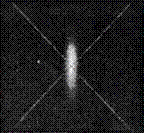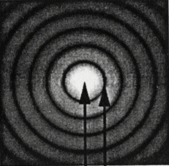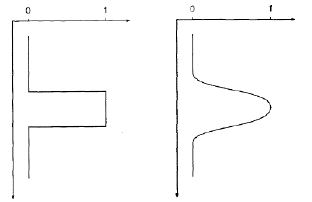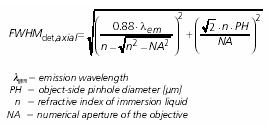![]()
Part 1 Principles
1. Fluorescence microscope
2. Filterset
in FL-Mic
3. How concocal differs?
4.
What is confocal?
5.
Resolution in confocal
6. Optical
sectioning
7. Confocal image formation
and
time resolution
8. SNR in
confocal
9.
Variations of confocal
microscope
10. Special features from
Leica sp2 confocal
Part 2
Application
1. Introduction
2.
Tomographic view
(Microscopical CT)
3. Three-D reconstruction
4. Thick specimen
5. Physiological study
6.
Fluorescence detecting
General
consideration
Multi-channel detecting
Background correction
Cross-talk correction
Cross excitation
Cross emission
Unwanted FRET
Part
3 Operation and
Optimization
1.
Getting started
2. Settings in detail
Laser line
selection
Laser intensity and
AOTF control
Beam
splitter
PMT gain and offset
Scan
speed
Scan format, Zoom
and Resolution
Frame average, and
Frame accumulation
Pinhole and Z-resolution
Emission collecting rang
and Sequential scan
When Do
you need confocal?
FAQ
Are
you abusing
confocal?
Confocal Microscopy tutorial
Part 1 Principles of Confocal microscopy
6. optical sectioning in confocal microscopy
How does confocal microscope make optica sectioning?
Point Spread Function (PSF) and confocal effect
As we mentioned before, in a confocal system there are two pinholes: A illumination pinhole for point light source and a detecting pinhole to get rid of out-of-focus image. Thus there are two point spread function: PSFs for source light which describes the distribution of point light in specimen plane and PSFd for detecting light which describes the distribution of point light image on the detecting plane. Since they two are independent events, mathematically, the probability of two independent events is the product of that two probabilities.
So, the total PSF of the confocal system is defined as PSFcf = PSFs x PSFd.
Since probability is a always
smaller than 1, the product of two probability is always smaller than its
individual probability.
In case of Airy disk: at the
central peak: 0.84 x 0.84 = 0.656
while for the third ring: it is 0.06 x 0.06 = 0.0036.
For a spot with 0.01 original intensity, the final intensity will be only
0.0001, thus below the detecting threshold and is ignored by the detector.
These number tell us that, for out-of-focus image, the farther a point is off the focal plane, the more dramatic the signal decreases. It gets so weak at some distance that it is well below the detecting threshold of the system then is no longer detectable. This is the fundamental mechanism of confocal effect or optical sectioning.
Figures below show this effect graphically.


|
| Axial: without pinhole Axial: with pinhole Lateral: without pinhole Lateral: with pinhole |
So, the confocal effect and optical sectioning
work at the cost of great reduction of total detecting volume.
For example, at 488 nm excitation:
the thickness of optical section, by
Formula 3:
 , is
about 500 nm. For a cultured cell at 12
µ,
this is less than 1/20 of its total volume.
, is
about 500 nm. For a cultured cell at 12
µ,
this is less than 1/20 of its total volume.
Side effects of reduced detecting volume
-
Deteriorated signal to background ratio SNR
The general reduction of detecting volume has much
more effect on signal than on background noise since some types of background
noise are constant or affected less by confocal effect. That means the SNR
(signal to noise ratio) and image quality become worse as signal decrease,
Formula 4:  describes this
relationship. N is number of photons which has squared effect on SNR.
describes this
relationship. N is number of photons which has squared effect on SNR.
This makes confocal microscope very vulnerable to weak signal. The reduction will make signal weaken to a level similar to or just a little bit higher than background and can not be enhanced by manipulating gain or threshold on PMT. In this case, the image quality is even worse than what can be taken from a digital camera based conventional fluorescence microscope, the resolution gain and all advantages over conventional microscopy is lost here. You even don't have usable data at all.
 It is also worth noting that the
optical section is not a neat section like cut by a microtome. It does not begin
and end abruptly in acute angle as in mechnical cutting,
instead, it looks like a figure shown on the left.
It is also worth noting that the
optical section is not a neat section like cut by a microtome. It does not begin
and end abruptly in acute angle as in mechnical cutting,
instead, it looks like a figure shown on the left.
Pinhole makes optical section possible. Pinhole size also determine the
thickness of the optical section. Theoretically, the thickness of the optical
section reach the thinnest when the pinhole size is zero or close to infinite
small. At this point, it equals to the axial resolution of the lens as predicted
by the formula listed above.
But pinhole can not be
zero or infinite small, it must has a physical size for image to be detected.
So, the optical section is always thicker than Z-resolution of the lens.
Formula 5 below
 shows the
influence of pinhole size on section thickness when pinhole is > 1 AU.
shows the
influence of pinhole size on section thickness when pinhole is > 1 AU.
When pinhole size is between 0.25-1 AU, the above Formula 3 for axial resolution can be used to approximate the optical section thickness by using value between 0.64 and 0.88 to replace 0.64 in the formula. For pinhole = 1 AU, 0.88 is used for calculation. This formula requires physical size of pinhole in use and is much more complicated for calculation. For estimating, one can use the axial Resolution. But bear in mind the section is thicker than predicted from axial resolution, or simply taking, it is roughly double size of the lateral resolution for the objective used.
Statement about this web and tutorial
For problems or questions regarding this web contact
e-mail:
This page was last updated
23.03.2004